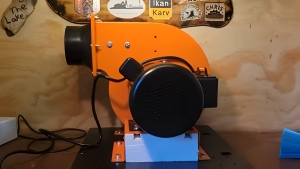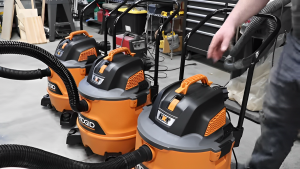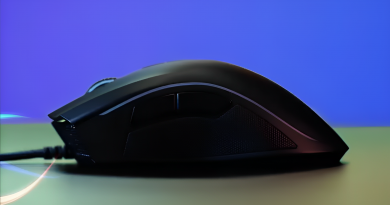Quiet Dust Collector
Keeping your workshop clean can be a pain, but it’s important for safety and productivity. And let’s be real, nobody wants to work in a dusty mess. Lucky for us, there’s a solution: a dust collector. This handy machine sucks up all the crap from your workspace, filters out the dust particles, and blows out clean air.
But here’s the catch, the problem is that workshop machinery is SUPER noisy! These things are loud as hell and can make you lose your mind. Too much noise is not only annoying, but it may also reduce your productivity and possibly cause hearing damage. Fortunately, manufacturers are now producing dust collectors that are as effective as traditional versions while being silent. So now you can work in peace and have a clean workshop without the headache. Check out our article for all the deets on the best quiet dust collectors out there!

Benefits of a Dust Collection System
Before we start, you have to know why dust collection systems are works of wonders. For starters, when the air is contaminated with dirt, dust, debris, chemicals, or gasses, it can harm the lungs of anybody who inhales it. Additionally, this particle can gather on or near equipment, creating a serious fire risk.
These pollutants are collected from the air by a dust collector, which cleans the air and improves the safety of everyone inside.
Likewise, dirt, dust, and debris that build on equipment might make their way inside, interfering with the device’s mechanics. This can result in slower machinery and equipment failure. Machines that have been compromised require constant care and repairs. Dust collectors eliminate this danger, enabling your machinery to function at its best.
Understanding the Two Main Types of Dust Collectors
A dust collector is a machine designed to remove dust, debris, and other particles from the air in a woodworking or metalworking shop. They are designed to keep the air in the shop clean and safe to breathe, while also protecting the machinery and equipment from damage caused by dust buildup. The dust collector works by drawing air and dust through a series of filters and capturing the dust in a collection bin or bag. A quiet dust collector is ideal for use in smaller shops or areas where noise is a concern, as they are designed to operate at a lower noise level than traditional dust collectors.
Dust collectors are usually distinguished in single-stage or two-stage systems with different configurations but comparable components, here’s how they differ:
1. Single-Stage Dust Collectors
Before falling into a lower bag or container, wood particles and dust pass via the impeller. As the air escapes through the cloth filter bag and back into the workstation, the dust is collected in an upper bag. The top bag collapses when the device is turned off, and much of the dust falls into the collector.
Larger particles can harm or jam the impeller, causing damage, while smaller particles can get into bearings and other moving components, causing damage. Plastic, nylon, or metal impeller blades are the most common in the market.
2. Two-Stage Dust Collectors
A two-stage collector has two sections and is set up differently. The coarse dust is initially drawn to the top of a barrel or container, where it is sucked out of the suction stream and collected in a collection bin. The finer particles are pulled up into the impeller and out into the cloth filter bag in the following stage.
After the impeller is in the after-stage, the air filters through the cloth and returns to the shop, the bag gathers the tiny dust. Larger particles getting collected or making their way into the filter bag are less likely to clog an after-stage filter and impeller. The two-stage unit has better suction and returns cleaner air.
Features to Look for While Choosing a Dust Collector

There are several factors to consider while purchasing a dust collector. The collector’s type and size, as well as its noise rating, shop size, airflow velocity, and bag or canister type, are just a few of the collector characteristics to consider. Specifically, here’s a wind-up list of the things you should look out for when buying a quiet garbage collector:
Dust storage capacity: Choose a dust collector with a sufficient dust storage capacity to avoid having to empty it too frequently. This is especially important if you work with large volumes of dust and debris.
Dust storage capacity:8. Storage type: Bag or CanisterBoth the bag and the canister are superior to a shop vac. The larger surface area of the canister traps more dirt and finer particles. The bag has a micron rating of 1 to 35 and is sensitive to puncture or damage by wood or metal objects. The canister is puncture-proof and may be equipped with a 1-micron pleated filter.
| 1. Noise Level | Dust collectors should be between 60 and 70 decibels quiet. The longer you are exposed to equipment that is louder over 80dB, the more likely you are to get hearing loss. You have hearing damage if you feel a ringing in your ears after using a dust collector and power equipment. Choose a collector with the lowest STC rating possible, so you’ll get a quiet appliance based on its soundproofing material capabilities. |
| 2. Sones and CFM | CFM stands for cubic feet per minute and is the measuring unit for expelling airflow. When using a dust collector, the higher the CFM number, the more air is exhausted. On the other hand, sone is a globally accepted loudness measuring unit that can accurately predict what humans can hear. When the number of sones in noise is doubled, the volume of the sound is likewise doubled (more info about sones on vedantu.com). |
| 3. Size | The number of tools you have depends on the size of your workshop, which may help you decide if a dust collector that can handle several machines is the best match. A medium-sized or industrial dust collector that can be mounted to many tools at once is a suitable fit for workshops with several pieces of fixed equipment. Of course, larger dust collector models will take up more room on your shop floor, which is another consideration to consider when choosing a model. |
| 4. Weight and Portability | Lightweight dust collectors, in general, are preferable for workshops that use a lot of handheld instruments, such as orbit sanders and belt sanders, to name a few. Fixed medium-sized or industrial dust collectors, on the other hand, are tough workhorses that match your workshop’s mainstays, such as planers and table saws. |
| 5. Motor and Horsepower | One way to determine the dust collector’s airflow rate is to look at its air suction capacity. The unit’s airflow is commonly measured in cubic feet per minute, or CFM- as we said earlier, which also shows how strong the motor is. Portable versions can have a CFM rate of approximately 150 CFM, whereas industrial ones can have a CFM rate of 1,500 CFM or even more. Heavy motors rated at 1 horsepower or even 2 horsepower or more are common in industrial models. |
| 6. Filtration System | The dust collector’s filtration capacity affects how well it removes suspended dust particles from the air. Most manufacturers specify a minimum dust particle diameter that their filters can collect – typical airbag filters should screen dust particles with a diameter of 2.5 microns or less. HEPA filters are used by several dust collector manufacturers. HEPA stands for high-efficiency particulate air. Pollen, pet dander, and even smoke are typically believed to be trapped by these filters (read more about HEPA filters on smartairfilters.com). |
| 7. Dust storage capacity | Choose a dust collector with a sufficient dust storage capacity to avoid having to empty it too frequently. This is especially important if you work with large volumes of dust and debris. |
Dust Collector’s Storage Types
- Cyclone dust collectors: These collectors use centrifugal force to separate dust and debris from the air stream. They are highly efficient and can handle large volumes of air.
- Baghouse dust collectors: These collectors use fabric bags to filter out dust and debris from the air stream. They are ideal for fine dust particles and are commonly used in industries such as cement, pharmaceuticals, and food processing.
- Cartridge dust collectors: These collectors use pleated filter cartridges to capture dust and debris. They are highly efficient and can handle a wide range of particle sizes.
- Wet scrubbers: These collectors use water to capture dust and debris from the air stream. They are ideal for capturing large particles and are commonly used in industries such as mining and metalworking.
- Electrostatic precipitators: These collectors use an electrical charge to attract and capture dust particles. They are highly efficient and can handle a wide range of particle sizes.
When choosing a dust collector, it is important to consider the type of dust or debris you are trying to capture, the volume of air that needs to be filtered, and the size of the space where the collector will be used.
Video: 5 Common Mistakes When Selecting a Dust Collector
FAQ
Are dust collectors noisy?
Dust collectors have the drawback of being quite loud. There are a variety of reasons why you would wish to take efforts to decrease the noise, especially when they operate constantly for lengthy periods of time. The first reason is for your employees’ safety and comfort. That’s why the quiet collectors we mentioned above would be a great help in keeping your peace and quiet!
How to quiet down a dust collector?
Because dust collectors frequently fit neatly into corners, a two-sided enclosure is a good place to start. You may make your enclosure permanent or create a standalone, detachable solution by attaching two wall panels together. Further noise reduction can be achieved by lining the inside of the enclosure with a stiff foam board or “egg-crate” acoustic foam.
How do quiet dust collectors work?
Is a dust collector quieter than a shop vac?
Dust collectors are typically quieter than shop vacs, can contain more chips, and can accommodate a longer hose. A shop-vac, on the other hand, is better than nothing for dust collection on nearly any fixed power equipment. A dust collector, though, would be unsuitable and ineffective for most handheld equipment.
Is a dust collector quieter than a shop vac?
Dust collectors are typically quieter than shop vacs, can contain more chips, and can accommodate a longer hose. A shop-vac, on the other hand, is better than nothing for dust collection on nearly any fixed power equipment. A dust collector, though, would be unsuitable and ineffective for most handheld equipment.
How do I maintain my quiet dust collector?
To keep your quiet dust collector running smoothly, be sure to regularly clean or replace the filters as needed. Follow the manufacturer’s instructions for maintenance and cleaning, and be sure to schedule regular inspections and servicing as necessary.
So, What Is the Best Quiet Dust Collector for You?
1. WEN 3401 Dust Collector – Best Сost-Effective

- 5.7-amp brushed motor combined with the 6-inch impeller moves over 660 cubic feet of air per...
- 4-inch dust port allows for connection to your favorite woodworking tools
Optimum Horsepower
With a 5.7-amp motor, the WEN 12-gallon Dust Collector moves over 660 cubic feet of air per minute. You may connect your favorite woodworking equipment to the 6-inch impeller and 4-inch dust port inlet.
Lightweight and Portable
The four 1-3/4 inch swivel casters of this product lock into place to prevent unwanted movement, and the compact design makes storage and transportation between jobs a breeze! Remove the wheels and use the optional built-in wall mount to attach it to your shop’s wall for convenient dust collecting anytime you need it.
Overall
With this device, the air in the immediate vicinity of the workplace is immediately cleaned. The issue is that it can be a little noisier than its competitors. However, if you can get beyond that one flaw and enjoy the other advantages that this device offers, this may be the perfect tool for you (more info on Dustcollectorgeeks.com).
Video: WEN 3401 Dust Collector – 1 Year Later Review!
2. SHOP FOX W1727 1 HP Dust Collector – Best Portable

- Motor: 1 HP, 120V/240V, single-phase, prewired 110V
- Motor amp draw: 9A/4.5A
Versatile for Multi-Machine Support
The Shop Fox W1727’s seamless compatibility with many common machines is one of the reasons it’s a favorite among workshop owners. When you combine the tool’s high mobility with its ability to handle a wide range of machines, you have a dust collector that you can rely on even when the workshop is at full capacity.
Compact with High-Quality Components
At first look, this system appears to be compact. And that’s a good thing because the complete equipment fits without being obtrusive in a small shop. Even if space isn’t an issue, no business owner wants large-signature instruments, especially if they’re only used for a specific purpose. You can rely on the W1727 to make the most of your space!
Overall
This dust collector is ideal for small businesses. So, if you want to clean up your shop, purchase the Shop Fox W1727—1 HP 800 CFM dust collector and be amazed at how much better your workstation will look. The best part is that it may be used as a stationary central dust collector or as a mobile dust collector (check on Homedepot.com).
Video: Shop Fox Dust Collector Review
3. WEN 3-Speed Remote-Controlled Air Filtration System – Best Air Filtration System

- Includes a 1-micron filter and a 5-micron pre-filter, both of which can be easily replaced
- Dimensions – 17” L x 20.5” W x 10” H | Electrical Requirements – 120V, 60 Hz, 1A |...
Great User Interface
The included remote allows you to manage the quiet system from up to 26 feet away. The lightweight design also comes with hooks for simple installation to any ceiling and weighs only 31 pounds! Depending on the situation, you may even easily choose between three settings of 300, 350, and 400 CFM.
Time Function
You won’t ever have to worry about forgetting to switch off your machine if you use the time function. All you have to do is set the timer. When the timer runs out, the machine will switch off on its own, allowing you to clean your workshop thoroughly at the end of a day of woodworking without needing to actually be there.
Overall
Overall, this machine is the most reliable air filtering system available. It not only circulates clean air around the room, but it also kills bacteria in the air. It’s a strong machine with two dust-trapping filters. And, it runs quietly and maybe simply operated using a remote control (check on Homedepot.com).
Video: Wen 3410 Air Filter – 3 Year Review on the 3-Speed Remote-Controlled Air Filtration System
4. Jet DC-1100VX-CK 1.5-HP Dust Collector – Best Efficiency

- Rated for Continuous Duty: Permanently lubricated, totally enclosed, fan-cooled motors.
- Fast Installation and Removal: Quick-connect collection bags with elastic band.
Maximum Filtration Efficiency
The dust collector by Jet has an 1100 CFM airflow for optimum filtering efficiency, and four casters are incorporated for portability and mobility. The filters are rotated to guarantee that the dust gathered is not accumulated, causing any harm to the user.
The Effective and Quiet Air Filtration System
This product performs excellently, filtering out 98 percent of 2-micron particles and 86 percent of 1-micron particles for cleaner, more breathable air. It has a sound rating of 70 to 80 dB and comes with a 5-year defect repair guarantee from Jet, which includes free repair services.
Overall
Jet’s DC-1100VX-CK Dust Collector is carefully designed with the goal of increasing efficiency and providing superior performance to its customers. This fantastic machine is a must-have for all serious woodworkers, whether you operate a little business or a large one! (check on Homedepot.com)
Video: JET 708659K DC-1100VX Dust Collector- Assembly and Set-Up
5. CRAFTSMAN CMXEVBE17595 Wet/Dry Vac – Best Versatile

- HEAVY-DUTY: Powerful 6.5 Peak HP provides extra power for large projects in the garage, shop...
- BUILT-IN BLOWER PORT: Rear blowing port on this wet dry vac allows for quick cleaning of leaves...
Convenient to Use
This is a great option for those who are concerned about storage space, since one of the most decent features of this vacuum is that it has built-in hose storage as well as power cord organizers, making it a much more efficient and streamlined model. It’s also remarkably quiet when compared to many other shop vacs on the market!
Cost-Effective
The fact that this device can be purchased for a little under $100 makes it an excellent entry-level option for people on a limited budget. The rear blowing port and huge drain make this multi-functional and extremely appealing for all types of commercial items, making it one of Craftsman’s greatest products.
Overall
This heavy-duty wet-dry vacuum will provide you with high performance. It comes with a built-in blower port as well as an oversized drain. A flex hose, two extension wands, a utility nozzle, a vehicle nozzle, a wet nozzle, a filter, and dust collecting bag are included as accessories, talk about being versatile! (check on Walmart.com)
Video: Craftsman 16 Gallon Wet/Dry Shop Vac – Quick Unboxing and Review
6. Jet JCDC-3 Cyclone Dust Collector – Best Cyclone Dust Collector

- CONSTANT SUCTION: Heavy debris is pulled down to collection drum before debris stream reaches...
- QUICK-RELEASE COLLECTION DRUM: Heavy debris is captured in a 66-gallon drum.
Impressive CFM Power
When compared to single-stage dust collectors with equivalent horsepower, this machine delivers at a 2-stage unit, which provides more CFM of airflow. As a result, anticipate this collector’s 763 CFM to suck more particles in less time than typical collectors of the same rating.
Big Barrel
A large 20-gallon barrel holds the large and heavy trash in this unit. Although this capacity is adequate for certain businesses, it is insufficient for those with machines that generate a significant amount of dust. The filter’s pleated layer catches dust particles as tiny as one micron.
Overall
Among the features we mentioned above, quick-release levers are also included with the dust drum. This feature, along with the unit’s smooth-rolling wheels, makes emptying a breeze. Even with the dust drum full, the swivel casters make moving the extractor about your business a breeze. A high-quality radio frequency remote control is also included with the unit (check on Homedepot.com).
Video: JET Cyclone Dust Collectors Overview
Conclusion
It is vital to evaluate your requirements before acquiring a dust collector. In layman’s terms, your dust collector needs to have the most suctioning power of all your machines, among other things. Even if you do not already have this equipment, investing in a more powerful dust collector will ensure that you do not face any difficulties when you do. We hope that now that you’ve read this article, you won’t have to put up with a loud workplace anymore!



